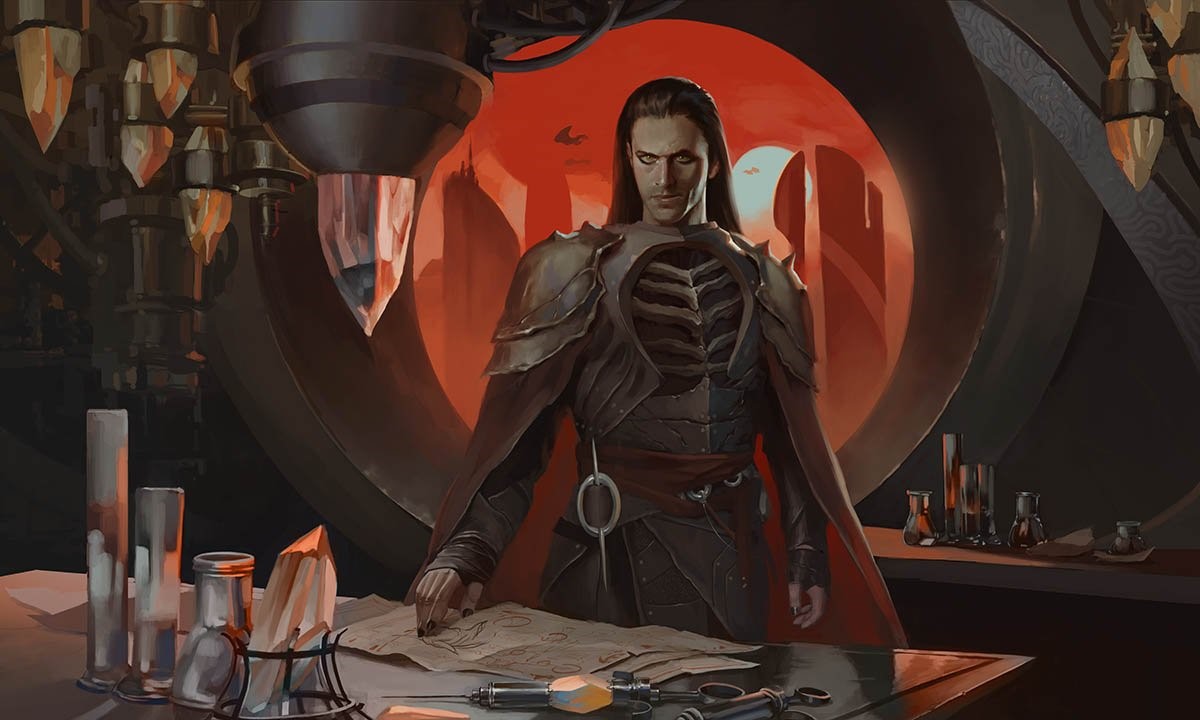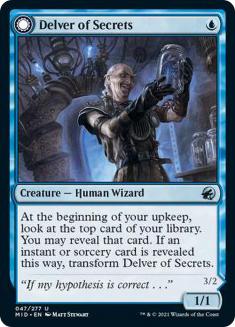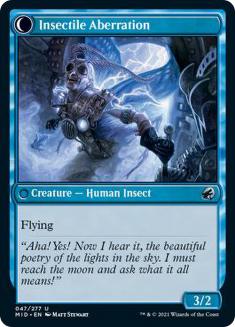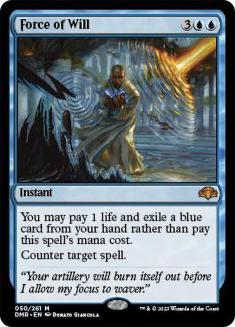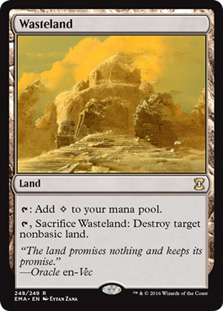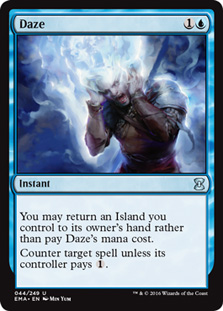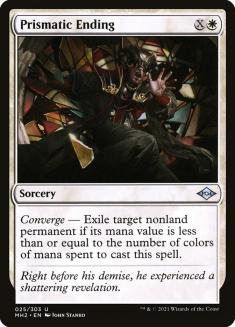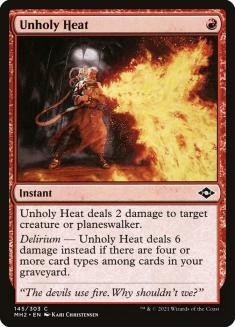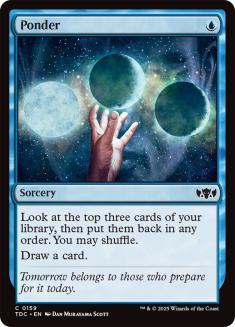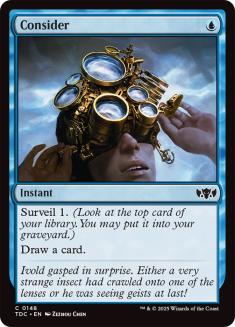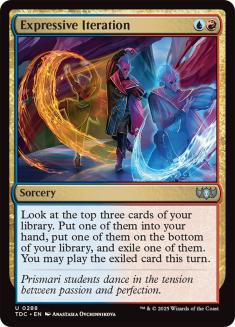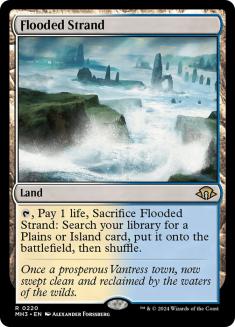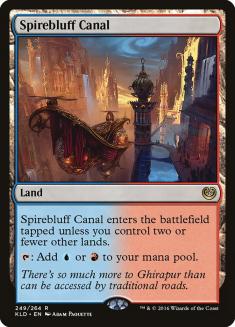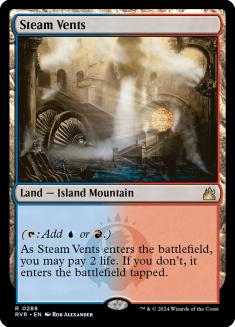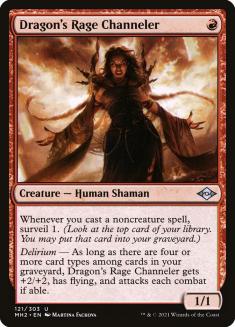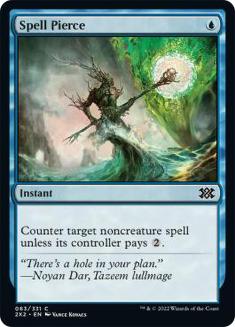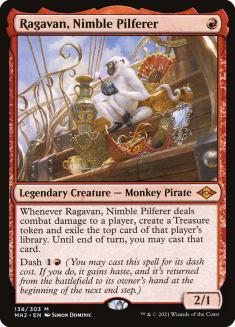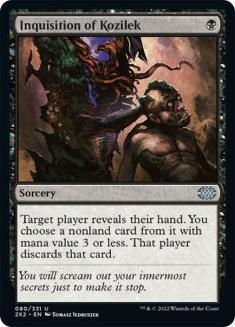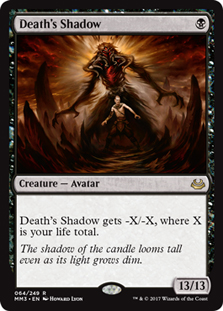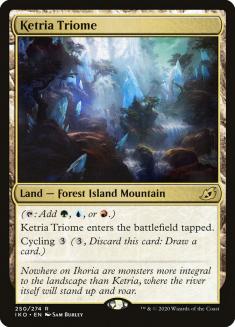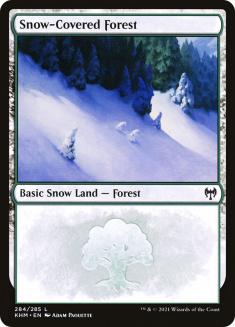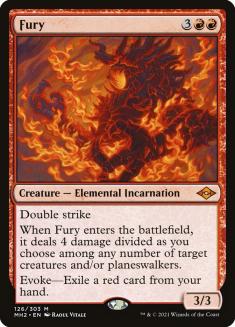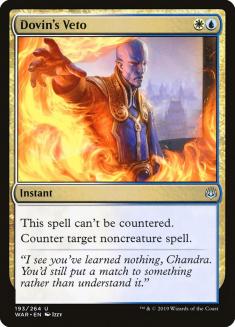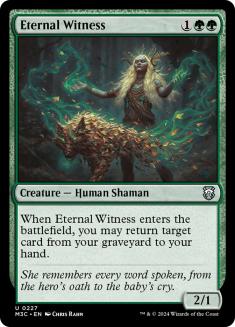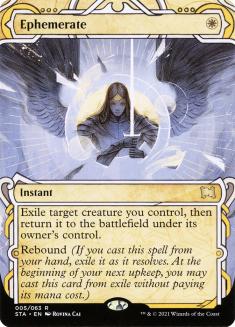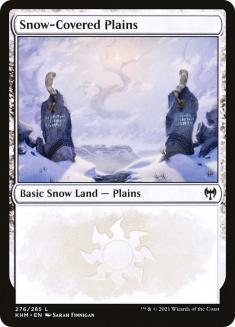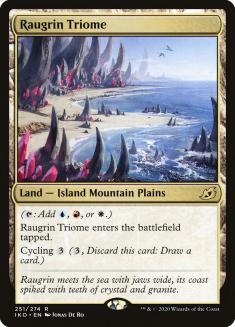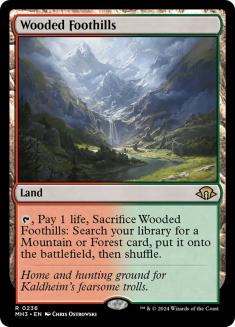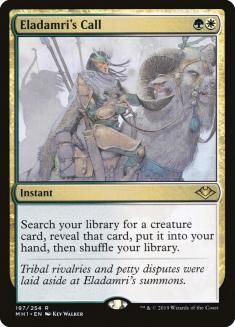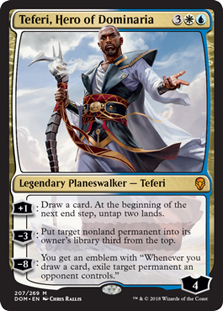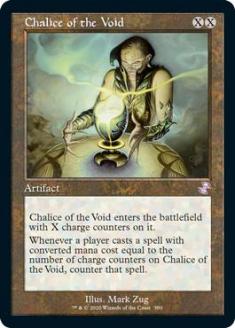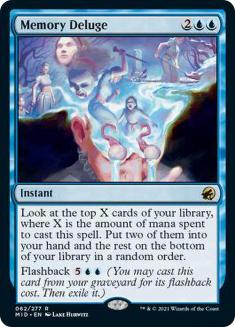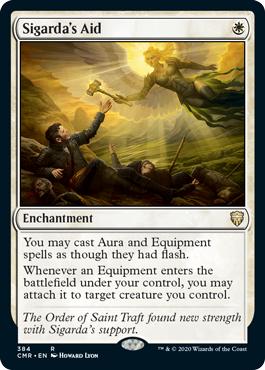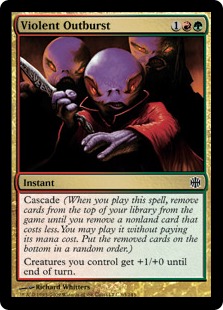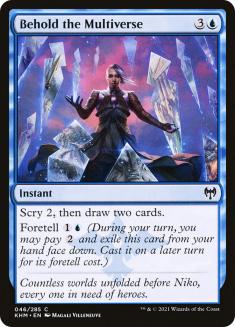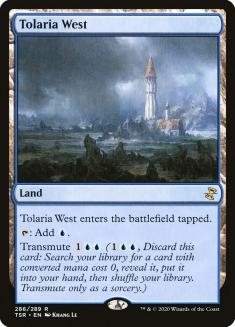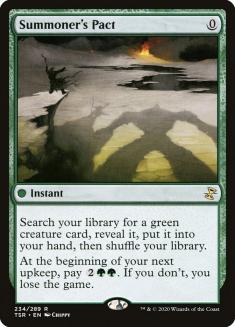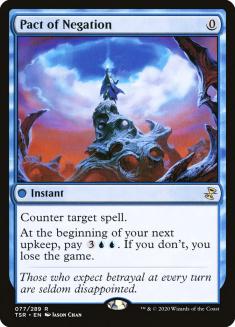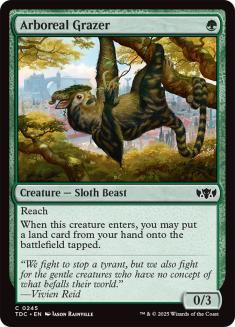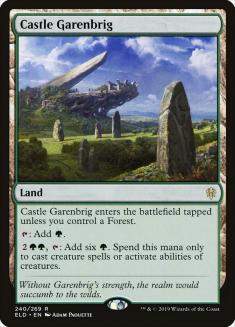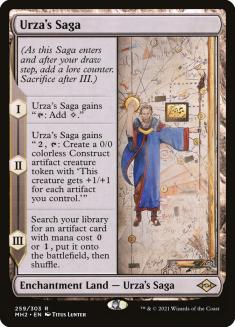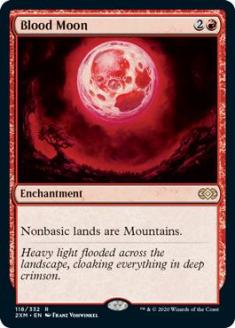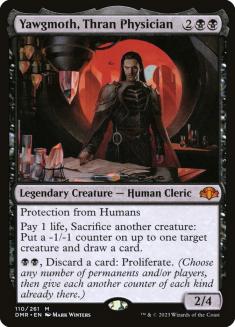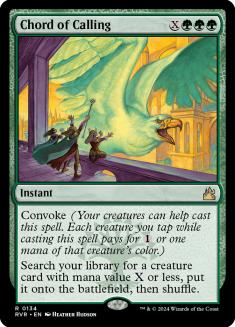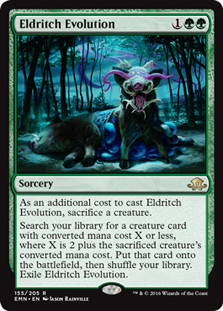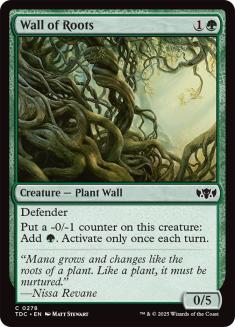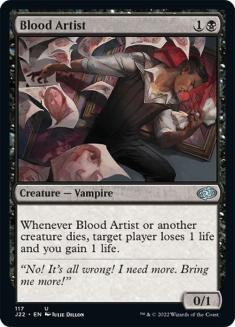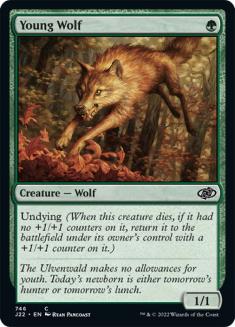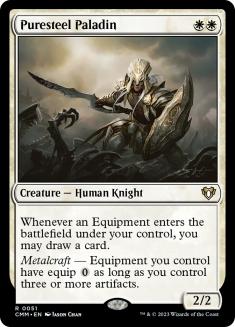Much as it always has been, Modern is a format where you have plenty of options for which deck to play. But choice comes at a cost of having to play in a bunch of different contexts. If you’ve played Izzet Midrange for a while and decide it’s time to change things up, how do you know after a dozen matches with Amulet Titan if the deck is underwhelming or you’re just playing it wrong?
For people trying to try a new deck from the top tiers of the Modern metagame, here’s my best tip for each archetype to help you make the switch.
Izzet Midrange: Single-threat hands are worse than they look.
Creatures (13)
Lands (18)
Spells (29)

It’s been over a decade, and Modern players are still making the same mistakes with the successors to Delver of Secrets.
Modern is not Legacy. Your threats are more important, and you often just lose the games in which those creatures die.
Protecting a single threat is not free. You don’t have Daze and Force of Will, just the easy-to-dodge Force of Negation. You don’t have Wasteland to extra-punish them and strand them after the first Swords to Plowshares. In Modern, it costs mana to Negate (or Counterspell these days) that exchange and the game continues to them doing better things later. At the point you are spending two mana and a card, why not just cast another threat?
And in the last year the removal has become too free to not play. The old hyperlinear, no-removal Modern deck has given way to “4 Prismatic Ending, 56 the rest of a deck.” The other Legacy Delver free win plan of “Turn 1 threat, Turn 2 through Turn 6 answers to their stuff” is a rare occurrence in Modern. You can’t even use a companion reveal to reliably predict the presence of efficient removal, barring Yorion, Sky Nomad being a slam-dunk sign you’re starting a grindfest.
Finally, the cards that would find you another threat if your first dies are generally worse. I trust Expressive Iteration to dig me out of a removal trade-off, but Consider or Mishra’s Bauble is stuck in the margins. You can’t just assume that, if your Ragavan, Nimble Pilferer dies, you will get to the next best thing soon enough.
I don’t want to tell you to mulligan single-threat hands, because Izzet Midrange isn’t built to do that. What I want you to do is to properly judge single-threat hands and play them as if they’re risky.
This comes up the most with Dragon’s Rage Channeler. Ragavan makes the risk too appealing to take, and Murktide Regent demands its own pacing and often game context tells you if you should jam or hold out for Counterspell backup since the answers for it are so specific. Look at the sample hand here. If your Dragon’s Rage Channeler dies, you’re completely stranded. If you cast the card Turn 1, you get to… attack for one on Turn 2? Just wait a turn and leave up Spell Pierce. Even if this hand just had a Consider over Spell Pierce, I would lean towards waiting just to lock in a surveil towards a follow-up threat.
The key to Izzet Midrange is often playing smart, not fast. You can’t always beat a pile of removal, but make your opponents work for their reactive wins.
Grixis Death’s Shadow (Lurrus): Putting Lurrus in your hand is good, actually.
Creatures (14)
Lands (19)
Spells (27)

The best card in Modern needs to be in your hand for you to cast it, ding dong.
All my instincts tell me to use Lurrus as a six-drop last resort. It costs six total mana in your deck of all one- and two-drops. That feels like a curve-topper to me.
Nope.
With Grixis Death’s Shadow (Lurrus) and the very similar Rakdos Midrange (Lurrus), there are lots of circumstances where you have a Turn 3 where none of your options are incredible and the game is going to take some time. Maybe you’re taking a reactive stance against Izzet Midrange, but they’re hanging out with answers over threats. Maybe you have your threat deployed against Azorius Control and don’t want to overextend into Supreme Verdict. Your best play is probably just grabbing Lurrus and letting the game keep going with your companion at the ready.
There are two big things the early Lurrus play opens up: easy “Lurrus plus recast threat” turns, and just the threat of Lurrus messing up your opponent’s lines. As much as six-drop Lurrus into Mishra’s Bauble sounds like value, Mishra’s Bauble draws a land some percentage of the time. Lurrus recasting a threat is a true two-for-one that always hits spells, and efficiently landing that line is often game-ending even if Lurrus immediately dies.
The threat of this play earlier on is often its own form of disruption. By the time you have six or seven mana to fully flip Lurrus, it’s almost free for your opponent to leave up Counterspell. Or maybe they’re the proactive deck and have time to pace their action properly to make the game a mess for you to respond to. But if you have access to Lurrus earlier, none of this is free for them. And this is all operating in the world where Lurrus immediately dies, since extra efficiency can let you leave up Drown in the Loch and get the “Lurrus survives” instant win.
The main reason to not use a low-value turn to pull Lurrus early is in Rakdos mirrors, where that exposes the card to Thoughtseize or Inquisition of Kozilek. Since those games also often come down to everything trading and attrition mattering, ensure you get the card out of Lurrus before you play for tempo.
My one bonus tip is Grixis Death’s Shadow (Lurrus) isn’t really an aggressively Death’s Shadow-ing deck. You just incidentally take damage and it happens to set up Shadow. If it looks like taking damage is a bad idea, you can just win with your other threats.
Four-Color Blink (Yorion): Get the game going first. Your mana spends itself later.
Creatures (17)
Planeswalkers (9)
Lands (29)
- 2 Wooded Foothills
- 1 Reflecting Pool
- 4 Windswept Heath
- 4 Flooded Strand
- 1 Tranquil Thicket
- 1 Snow-Covered Plains
- 1 Snow-Covered Mountain
- 1 Snow-Covered Island
- 2 Snow-Covered Forest
- 1 Sacred Foundry
- 1 Temple Garden
- 1 Steam Vents
- 1 Stomping Ground
- 1 Breeding Pool
- 1 Hallowed Fountain
- 4 Misty Rainforest
- 1 Ketria Triome
- 1 Raugrin Triome
Spells (25)

The entire point of playing Four-Color Blink (Yorion) or the Four-Color sector of the metagame in general is that your deck has overpowering high-end cards. If you have Yorion, Sky Nomad, one of those overpowering cards starts in your hand every game.
That means you have two goals: make land drops and don’t die.
Two-land hands that don’t cantrip or Wrenn and Six? Sketchy. I probably keep this hand, but I’m expecting to Eternal Witness my Windswept Heath.
Your opponent reveals a Lurrus of the Dream-Den. Your hand is four lands, Eternal Witness, Ephemerate, and Omnath, Locus of Creation. Nah, try again and take some game actions next time.
Notice Eternal Witness making both of these hands weird. Can you see why I prefer the Eladamri’s Call versions of this deck where you draw a card that is functional on Turn 2 instead of it?
Mulligans certainly hurt when your goal is playing lands and casting removal, but you need to do both of those things in most games to win. Plus, it’s 2022. You should know by now the second mulligan is the concerning one. “I would rather lose than mulligan” can be left behind in the era of flip phones; take a nearly free London mulligan and take game actions instead.
Azorius Control (Kaheera): Who is winning on Turn 5?
In this era of Magic, control decks need some hammer-dropping threat to win games without a ton of effort. That, or Shaheen Soorani has swindled you into playing some pile. For Azorius Control, that card is Teferi, Hero of Dominaria.
But Teferi isn’t the only way to win games with Azorius. You can Chalice of the Void people, break up their action with Solitude, or bury them with cards the old-fashioned way with Memory Deluge.
Beyond win conditions, the big deal for Azorius in Modern is that your answers are efficient and generic, giving you choices of how to not lose the game. You don’t always have a ton of flex in which of these plans is effective in a matchup, and which plans work defines how you should be spending you Counterspells and Prismatic Endings. And as always with control, wasting answers is the fastest way to lose.
So ask the question: if everyone is churning along on Turn 5, or really somewhere up until Turn 8, are you a favorite to win the game?
In many matchups, like Mono-White Hammer (Lurrus), the answer is if you’re alive, you’re a favorite if you just keep not dying. In those matchups, your opponents tend to run out of things that actually threaten you, and getting to that Turn 5 or Turn 8 implies you will also get to Turn 12 where Memory Deluge flashback is online and you win easily. You should be really concerned about getting the good lineup with your answers. If the goal is not dying, use your answers to directly stop the things that kill you.
In other matchups, the answer is muddled. If your opponent isn’t inherently behind in a long game, you really need to be thinking about those game-warping plays. Becoming a pseudo-Stax deck with access to Chalice of the Void also comes with the drawback of drawing those specific lock pieces when they aren’t profitable, and the Modern crop of Azorius decks can struggle against a good spread of pressure that doesn’t get bottlenecked in a conveniently answerable point.
Against anything resembling that, you’re a midrange planeswalker deck looking to set up Teferi, Hero of Dominaria or the two-card “combo” of it plus Counterspell. Your answers aren’t precious; you’re just using them to not die and you aren’t so far behind that Teferi resolves and promptly dies itself.
This tip is cheating a bit, because it’s actually how you need to play control in every format these days. Four-Color Blink (Yorion) gets to cheat a little because “get mana and slam a big thing” is just what it does and the pacing doesn’t vary much, but you would do best to take this lesson to heart in Standard, Pioneer, or whatever format you end up playing. This is Who’s the Beatdown 101, just applied to decks that aren’t traditionally beatdown with win conditions that might not use the combat step.
Amulet Titan: The hard part is getting to Primeval Titan, not resolving it.
Creatures (13)
Planeswalkers (4)
Lands (31)
Spells (12)

Over the years of SCG Tour coverage, a lot of the discourse around the arbitrary Great Canadian Amulet Titan player was their ability to toolbox their way out of any scenario. You see, this game they got Khalni Garden and Tolaria West and then played the Simic Growth Chamber for the turn and their galaxy-size brain collapsed into a black hole that consumed their opponent’s life total or something. And you know what, trying to navigate those scenarios was legitimately hard.
I would like you to now load up a currrent Amulet Titan list and point to the one-of tutor targets.
Spoiler: there aren’t many. You just cast big doofus and find the thing that big doofuses them. If you didn’t big doofus them successfully, do the thing that does it again and try harder this time.
All that difficulty has moved back to counting to six as quickly as possible. A bunch of waypoints that can boost you a land drop or Amulet of Vigor have been added to the equation in Arboreal Grazer, Castle Garenbrig, and Urza’s Saga. Timing matters on all of these, and they combine in different ways with Amulet of Vigor. Arboreal Grazer is a Pyretic Ritual with a bounceland, Castle Garenbring may or may not be Forest-dependent, and Urza’s Saga wants to go off on a specific turn to min-max Prismatic Ending exposure of your Amulet of Vigor.
If you want to pick up Amulet Titan, I would advise goldfishing hands… and then going back in time and thinking about other choices. Should you Summoner’s Pact for Azusa, Lost but Seeking and pay the price next turn to assure a Primeval Titan in two turns, or do you have a good number of outs to a faster Titan? Where exactly does that bounceland fit in if you Turn 1 Urza’s Saga and want it to go off Turn 3?
Your opponents will do things to mess you up, and the fastest play isn’t always the most resilient. But it’s easier to take it back a notch and play a hand more slowly than it is to figure out the optimal quick kill on the fly. Not to mention those slow games are way more forgiving than the ones where that extra turn you might gain from a specific sequence and topdeck matters. It’s easier to lose to Terminate or Blood Moon once and not lose the same way again than it is to learn multi-turn math problems, so learn the hard stuff first before the easy losses show up.
Golgari Yawgmoth: Maximize spending your mana.
Creatures (28)
- 4 Birds of Paradise
- 4 Wall of Roots
- 1 Scavenging Ooze
- 4 Strangleroot Geist
- 1 Geralf's Messenger
- 4 Young Wolf
- 1 Blood Artist
- 4 Yawgmoth, Thran Physician
- 4 Ignoble Hierarch
- 1 Endurance
Planeswalkers (3)
Lands (21)
Spells (8)
Sideboard

This is really the same advice as Amulet Titan. Both are green-based, low-interaction combo decks with some room to outmaneuver answers. So what you want to do every game is figure out how to make your kill turn as early as possible.
The first hurdle to clear is realizing the way to lose is getting expensive cards stuck in your hand. Piles of Eldritch Evolutions and Chord of Callings do nothing if you can’t use them, and often a Yawgmoth, Thran Physician that is going to die to removal can sacrifice things to find the next Yawgmoth. Once you have the first copy of Yawgmoth locked up, start thinking about your extra tutors as ways to get another undying creature or Blood Artist on the battlefield earlier. Not casting them and dying is the worst-case scenario.
For actually generating mana, look to Wall of Roots and Chord of Calling. Getting the full Thran Dynamo out of Wall in a turn cycle between using it on your turn, their turn, and convoking with it is usually the route to your quickest wins. Getting to use Wall of Roots mana the turn you cast it is similarly fast, and the turbo-dump of stuff early is often how you get to those scenarios where you can double-spell with Chord of Calling to end the game.
The other part is recognizing how your Necropotence-style loops with Young Wolf and Strangleroot Geist can turn into actual wins with the right draws. Again, Chord of Calling dominates this discussion. Tapping your undying creatures to a first Chord or a combat step (to get their life total critically lower than yours for Geralf’s Messenger later) and then sacrificing those undying creatures to Yawgmoth untaps them.
Golgari Yawgmoth is really a downhill race to a combo kill that accidentally rolls people over with janky beatdown if they try to get right into the way to stop it. Play it that way, and don’t leave your spells uncast.
Mono-White Hammer (Lurrus): Get good.
Creatures (23)
- 4 Ornithopter
- 2 Kor Outfitter
- 4 Stoneforge Mystic
- 4 Memnite
- 4 Puresteel Paladin
- 1 Gingerbrute
- 4 Esper Sentinel
Lands (23)
Spells (14)

I really saved the best and hardest deck in the format for last, didn’t I?
Yeah, because there isn’t an easy tip or trick.
I did it because there’s no single easy trick here. Playing Mono-White Hammer is just hard, and no single tip is going to fix it. It combines the preserving your threats aspects of Izzet Midrange, the Lurrus timing of Grixis Death’s Shadow (Lurrus), the fast combo planning of Golgari Yawgmoth, and the Urza’s Saga timing of Amulet Titan into one deck, and it wins because it can functionally do all those things.
So, while you puzzle through the really hard game-by-game decisions of bonk-ing people, the best thing you can do is learn the free ways to not lose. Cast your Colossus Hammer before your Puresteel Paladin so they can’t Unholy Heat the Paladin in response, and then equip the Hammer to something else. Don’t just run out the Turn 1 Memnite if it needs to be tapped Turn 2 to Springleaf Drum to activate Urza’s Saga.
That at least gets you halfway to not throwing away games with the deck. The rest is on you to do better than the last match. Even if you have the right big picture way to think about a deck, sometimes you just have to do the old-fashioned work to learn the details to really get the most out of it.

